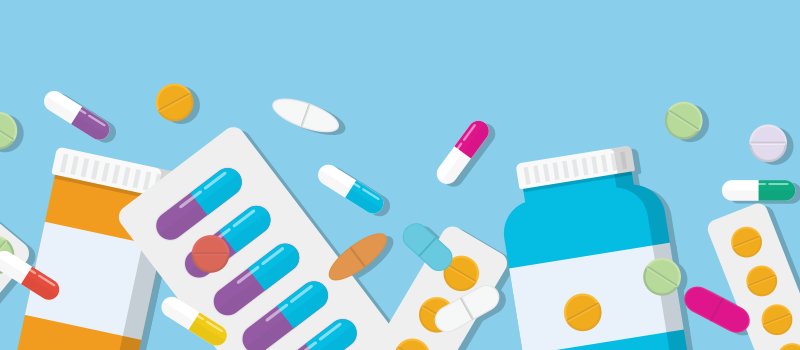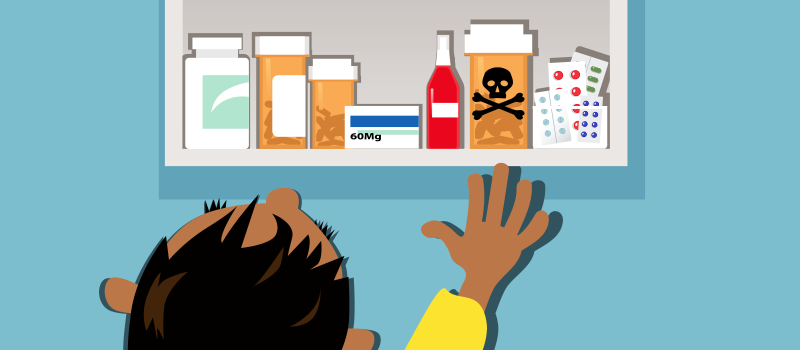What’s the Buzz
The Bee Healthy Blog
Everything You Need to Know About Mammograms

This year alone, an estimated 276,480 women in the U.S. are expected to be diagnosed with new cases of breast cancer. Although breast cancer cannot be prevented, detecting breast cancer early by getting a mammogram is the most effective screening tool used today. In light of Breast Cancer Awareness Month, we’re sharing what you should know about mammograms.
What is a mammogram?
A mammogram is an x-ray picture of the breast to detect any changes in the breast tissue. Mammograms can show these changes before a lump can be felt. During the procedure, the breast will be exposed to a small amount of radiation that produces an image of the breast.
It is recommended that women in their forties get a breast cancer screening every one to two years. For women with a family history of breast cancer, it is recommended to go earlier in life.
According to the National Breast Cancer Foundation®, there are two different mammograms:
1. Screening Mammograms: used to look for signs of breast cancer in women who don’t have any symptoms or problems. X-ray photos of each breast are typically taken from two angles.
2. Diagnostic Mammograms: used to examine a woman’s breast if she has had symptoms or a change is documented on a screening mammogram. This type of mammogram is also for those who have previously been treated for breast cancer
How do mammograms work?
The technician will place your breast between two plates of the machine, which will flatten the breast for a few seconds in order to get a clear photo. The process should take about 10 to 15 minutes to complete but can take longer if additional angles are performed. For a woman with breast implants, the procedure can take up to 30 minutes to obtain a clear image.
What is a contrast-enhanced mammogram?
Contrast-enhanced mammography (CEM) is a new type of mammogram that finds cancers using an IV injection of X-ray contrast dye (iodine-based). A contrast-enhanced mammogram (CEM) examination provides additional information beyond a conventional diagnostic mammogram. Contrast-enhanced mammograms can detect cancers that may not be visible on a standard mammogram and offer improved reporting confidence, especially for those with dense breast tissue. Contrast-enhanced mammography can save time and minimize anxiety as the test has the potential to reduce unnecessary breast imaging to a single investigation.
A contrast-enhanced mammogram might also be recommended for:
- Breast cancer screening for women with an increased risk of breast cancer or a family history
- Further evaluation of any breast lumps found during a physical exam
- Pre-surgery planning
- Post-treatment surveillance
How to prepare for a mammogram
The CDC recommends avoiding a mammogram the week before/during your menstrual cycle due to breast tenderness. Also avoid wearing deodorant, perfume, or powder, as these products can affect the x-ray images.
If you’re attending a contrast-enhanced mammography appointment, before you attend, a full medical history should be taken. Specifically including any prior conditions such as kidney (renal) function, diabetes, high blood pressure, or any reactions to previous contrast. If you are over 60 years of age, please ensure you have completed a recent blood test for renal function (within 3 months) called eGFR. This test checks your kidney function and creatinine levels.
On the day of receiving mammography with contrast, it’s recommended that you drink plenty of water before and after the test. The contrast may cause some mild nausea, so only a light meal (such as soup) is recommended on the day of your exam. But be sure to follow your healthcare provider's instructions, as sometimes they can instruct no food or beverages several hours prior to your appointment.
Also avoid the use of deodorant, lotion, cream, powder, talc, oils, or perfume on the day of your CEM exam. Drink six to eight (8 ounces) glasses of water in the 24 hours after, as water will help remove the contrast from your body.
Are mammograms covered by health insurance?
Medicare, Medicaid, and most insurance companies cover the cost of mammograms. Since September 2010, the Affordable Care Act has required all new health insurance plans to cover screening mammograms every 1-2 years for women ages 40 and older, with no out-of-pocket costs. If you don’t have insurance or your insurance doesn’t cover mammograms, the resources below may help you find low-cost or free mammograms:
- The Komen Breast Care Helpline can help you find low-cost breast cancer screening in your area.
- The National Breast and Cervical Cancer Early Detection Program provides access to breast cancer screening to low-income, uninsured, and underinsured women ages 40-64. It also provides access to diagnostic testing if results are abnormal, and referrals to treatment if breast cancer is diagnosed.
Each October, during National Breast Cancer Awareness Month, many imaging centers offer mammograms at reduced rates. To find a certified mammography center in your area, visit the FDA website (www.fda.gov).
When will I receive my mammogram results?
Depending on your facility, you should receive your results within a few weeks. A radiologist will read your results and report them to you and your doctor. You should contact your healthcare provider if you haven’t received your results after 30 days.
Getting a mammogram can be intimidating, but according to the American Cancer Society, when breast cancer is detected early and is in the localized stage, the 5-year relative survival rate is 99%. Early detection includes doing monthly breast self-exams and scheduling regular clinical breast exams and mammograms. It is also reported that breast cancer death rates have declined 40% from 1989 to 2016 among women, and progress is attributed to improvements in early detection. Encourage yourself and those around you to get tested—early detection can make all of the difference.












SOCIAL